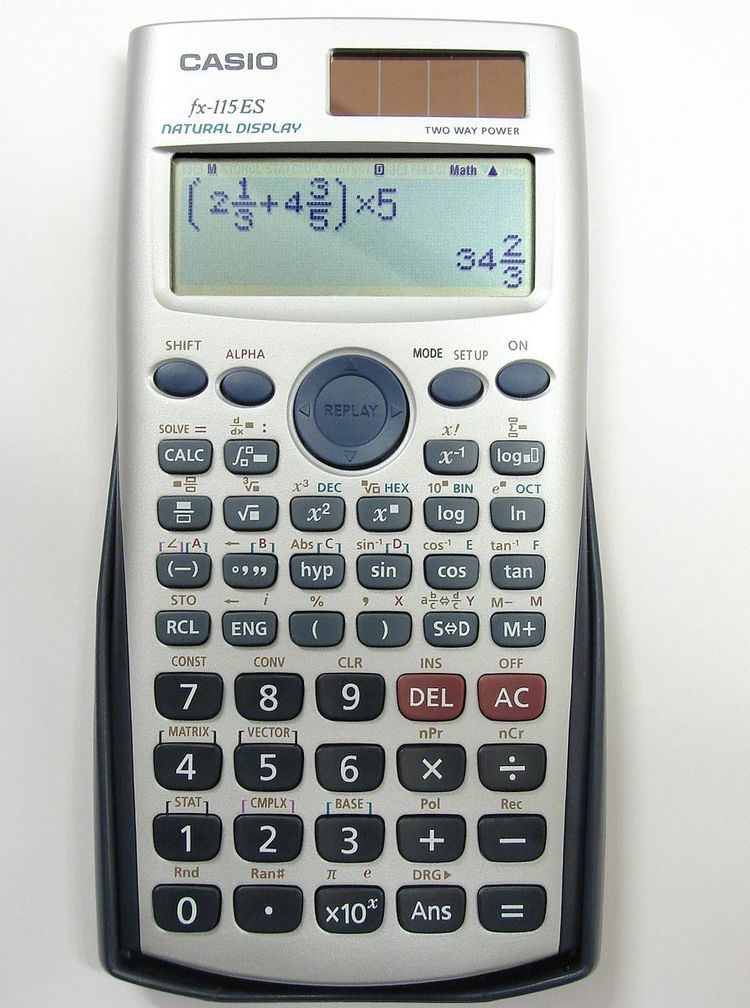 | ||
Casio V.P.A.M. calculators are scientific calculators made by Casio which use the V.P.A.M., Natural Display or Natural V.P.A.M. input methods.
Contents
- History
- VPAM Visually perfect algebraic method
- W series
- MS series
- Natural Textbook Display
- Natural VPAM
- ClassWiz High resolution Natural Textbook Display
- References
Visually Perfect Algebraic Method (V.P.A.M.) is an infix system for entering mathematical expressions, used by Casio in most of its current scientific calculators. In the infix notation the precedence of mathematical operators is taken into account. According to Casio, in V.P.A.M. calculations can be input exactly as they are normally written. Functions, operators and symbols are shown on the calculator display and calculations are performed according to operator precedence.
History
The V.P.A.M. name were first introduced in 1994 with the release of the fx-991S scientific calculator in Japan. In 1998, the Casio fx-991W model used a two-tier (multi-line) display and the system was termed as S-V.P.A.M. (Super V.P.A.M.), featuring 5x6-dot LCD matrix cells top line and 7-segment LCD bottom line that had been used in Casio fx-4500P prog calculators. S-V.P.A.M. was also used in the other W series and also the MS series of calculators that followed. V.P.A.M. is similar to the Direct Algebraic Logic (D.A.L.) used by Sharp in some of their scientific calculators.
The fx-82ES introduced by Casio in 2004 was the first calculator to incorporate the Natural Textbook Display (or Natural Display) system. It allowed the display of expressions of fractions, exponents, logarithms, powers and square roots etc. as they are written in a standard textbook. Natural Display uses natural representation of mathematical expressions and formulas through a 96 × 31 dot matrix LCD display. Casio uses the term Natural V.P.A.M. for the fx-ES Plus series calculators which are the updgraded version of the fx-ES series.
In early 2015 Casio introduced a new line of calculators called the CLASSWIZ series for different markets, featuring a high resolution (192 × 63) Natural Textbook Display and spreadsheet functions. The fx-991EX is a part of the CLASSWIZ series released for the international market and succeeds the fx-991ES PLUS.
V.P.A.M. (Visually perfect algebraic method)
Models:
W-series
Changes to S-series calculators include:
MS-series
Changes to W-series calculators include:
Non-programmable models:
Programmable models:
Natural Textbook Display
Changes to MS-series include:
Model-specific features include:
Models:
Natural V.P.A.M.
Models:
ClassWiz (High-resolution Natural Textbook Display)
Changes to the ES PLUS series include:
Model-specific features include:
Models:
